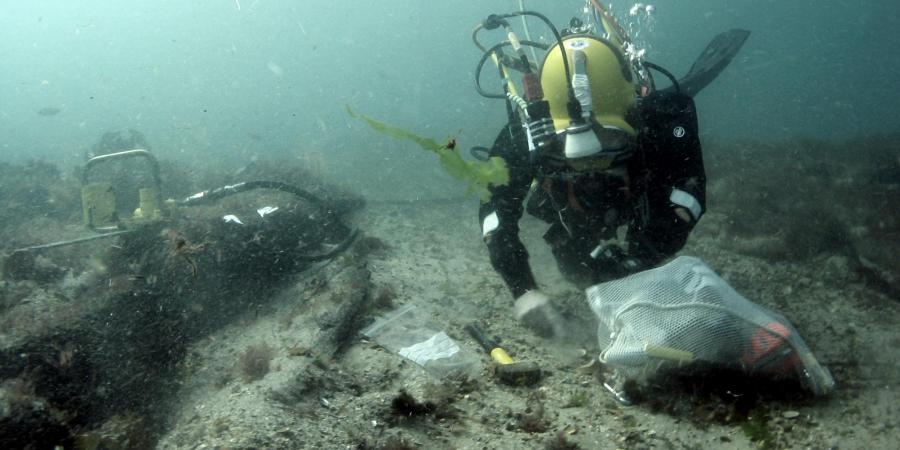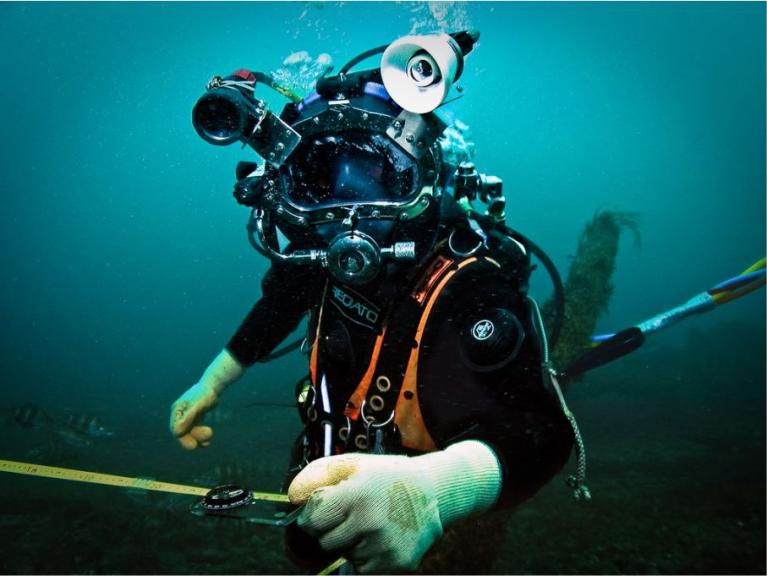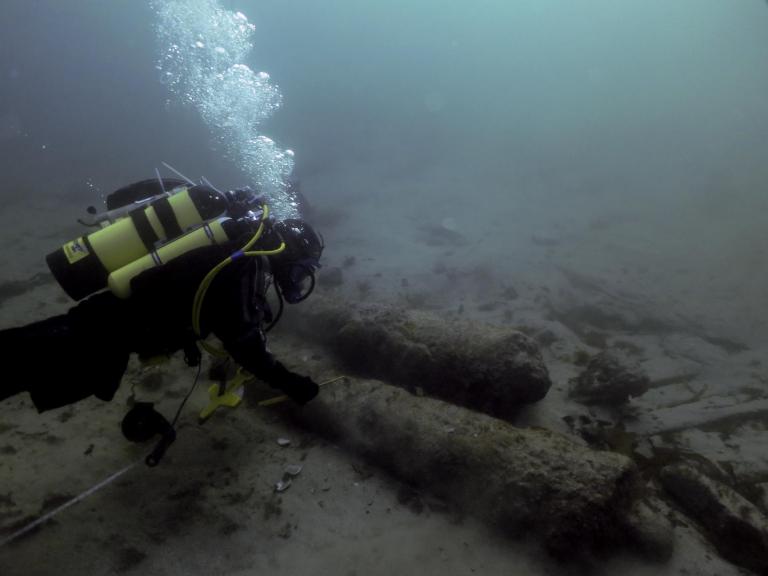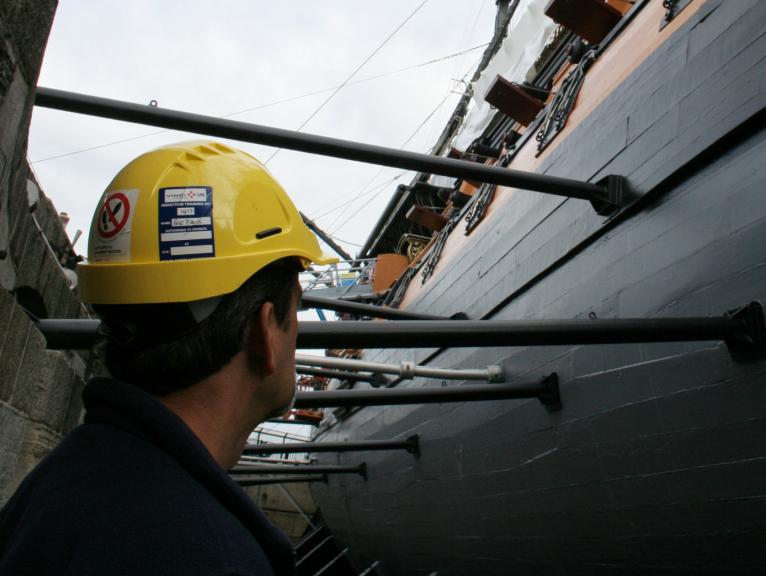The Swash Channel wreck was discovered in 2004 during a geophysical survey by Wessex Archaeology in advance of dredging to deepen the approach to Poole Harbour. The wreck lies in approximately 6-9 metres of water with its long axis orientated north-east to south-west.
The site is part of the side of an unknown vessel, with frames, ceiling and outer planking, possible knees and a fragment of decking, together with other miscellaneous features. It appears that a substantial section of the top timbers, including circular ports and railings, survives in very good condition.
The site was designated as a protected historic wreck site in 2004. Historic England now administers the wreck and Bournemouth University are actively investigating the site.
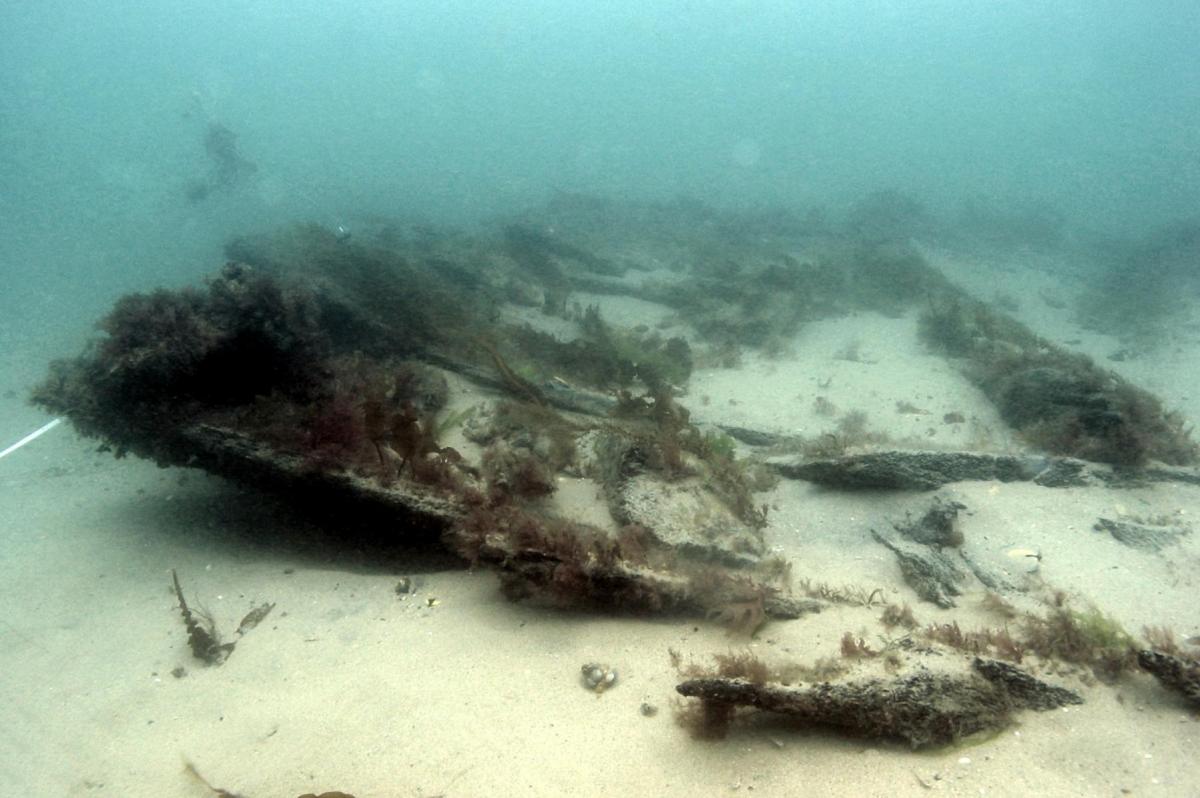
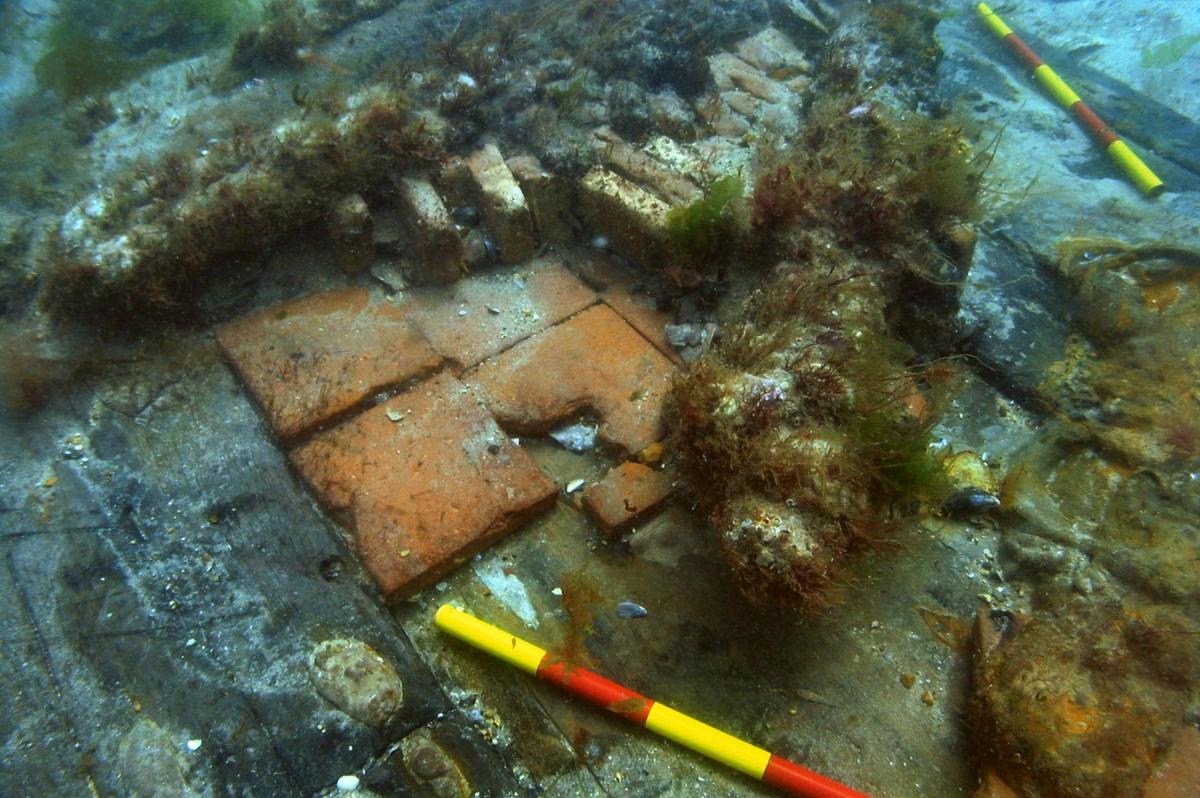
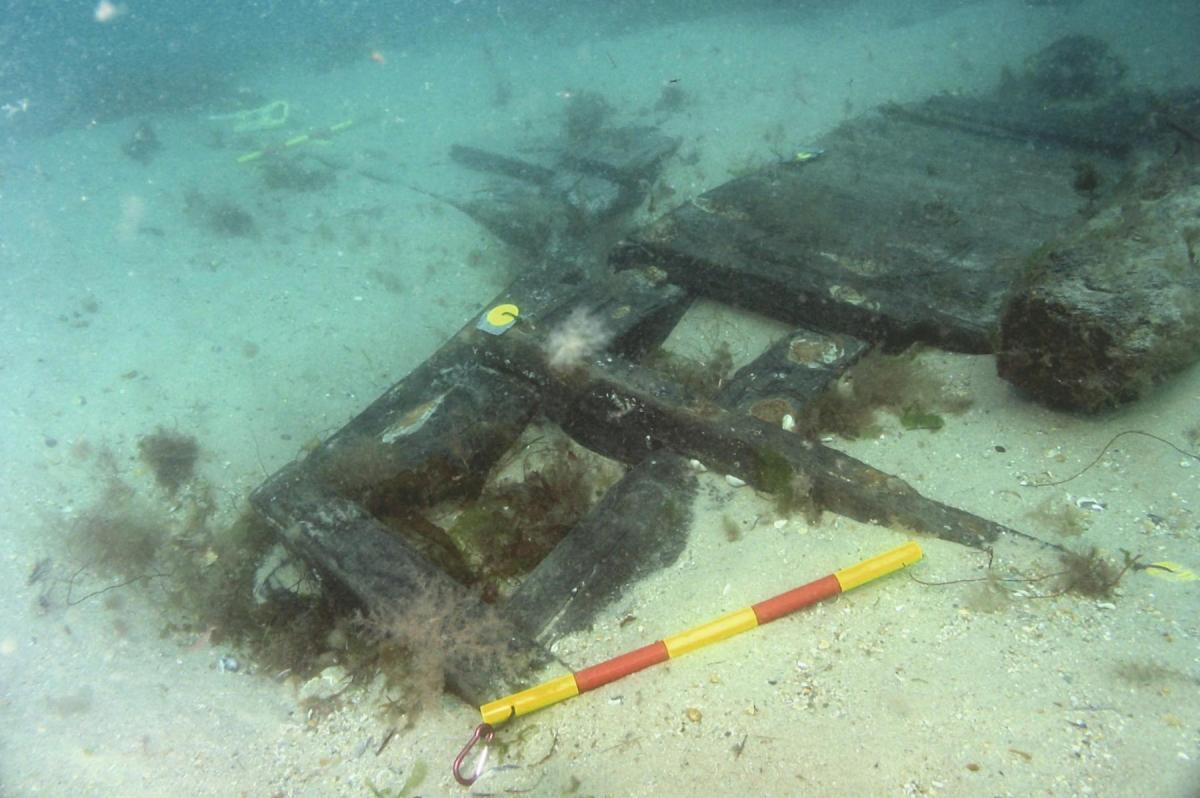
Wessex Archaeology's Diving Investigations
Following the site's discovery it was subject to an initial diving assessment on behalf of Poole Harbour Commissioners.
Subsequently Wessex Archaeology was asked by Historic England to investigate the wreck as part of our work under the Protection of Wrecks Act (1973) in 2005. The divers produced a photographic survey of the exposed site, prepared a georeferenced plan of the main exposed archaeological features, and made detailed measurements of the features on the site.
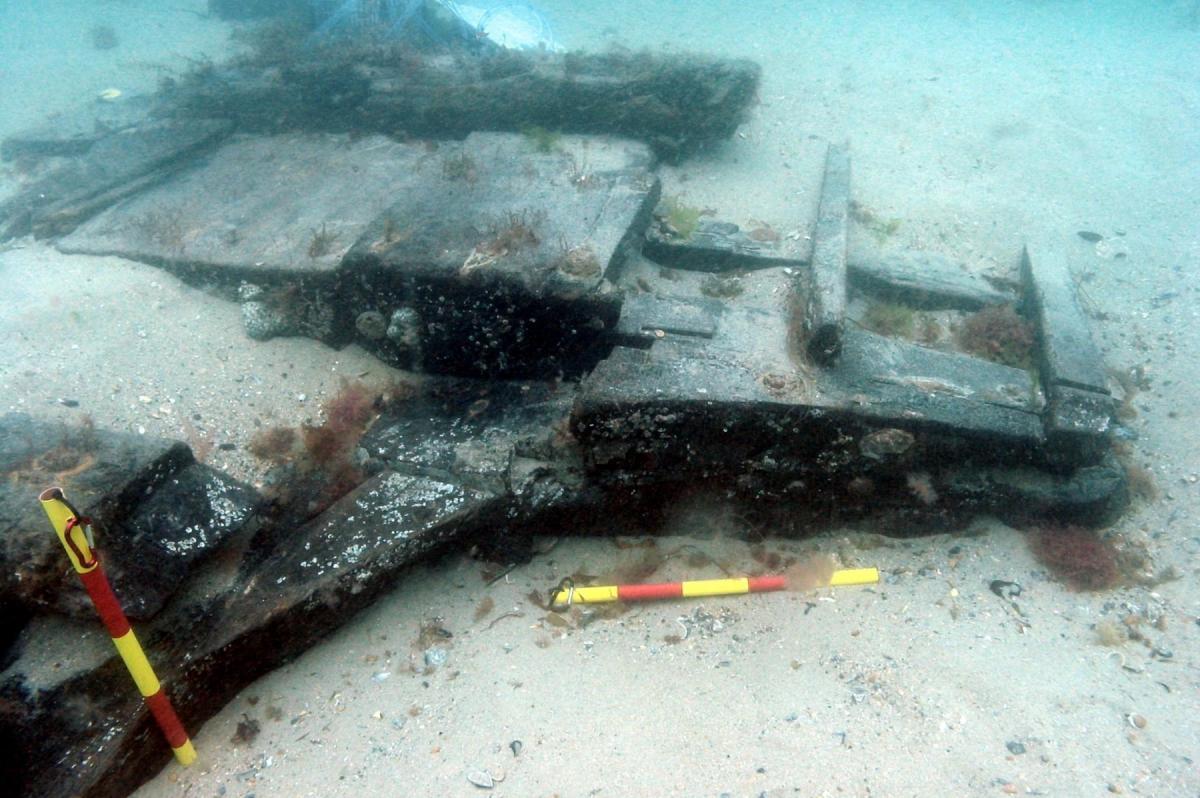
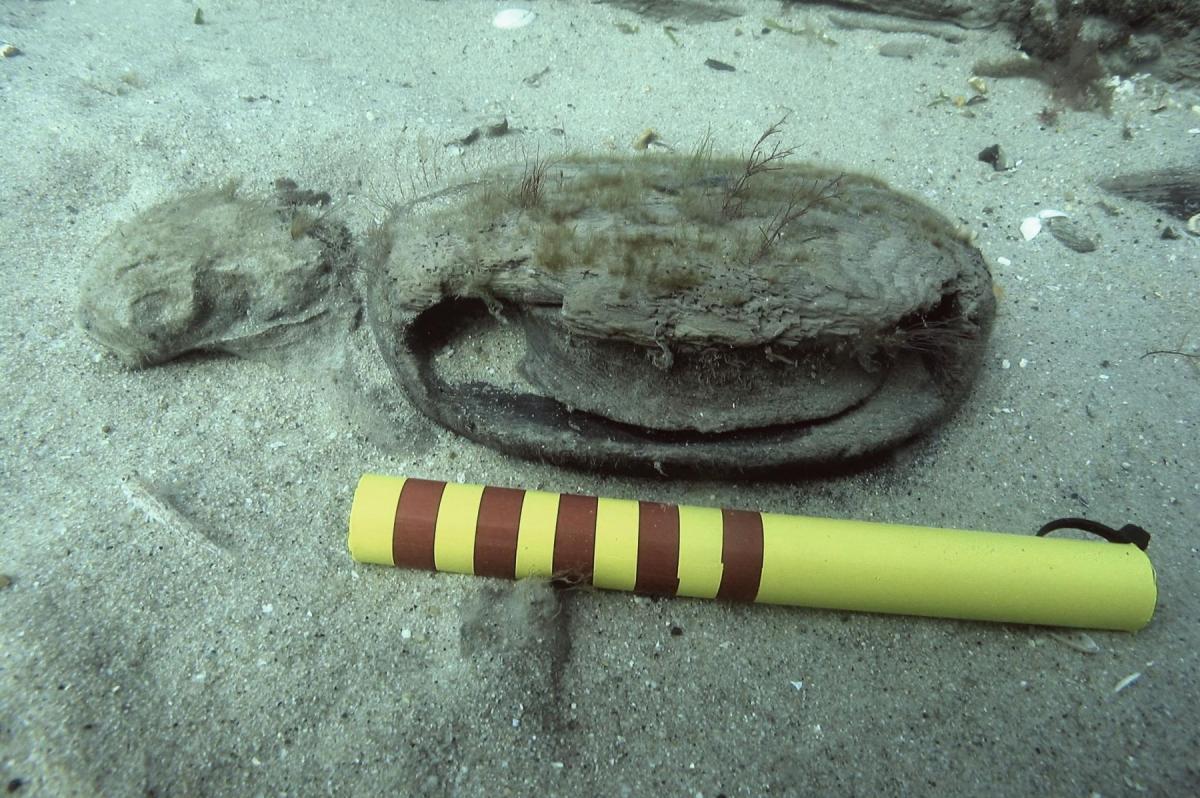
Wessex Archaeology was then commissioned to carry out sandbagging of the areas of the wreck deemed under threat and to remove various vulnerable finds from the existing channel slope, in advance of dredging. An ambiguous dendrochronological date was obtained, following the sampling of two pieces of wood from within the ship's structure, which indicated that the timber had been felled in or after 1585 and that the tree grew in Germany or Holland.
From the study of the structure it is thought that the vessel may be longer than 40 metres in length, the large size of the guns supports this view. Pottery from the site implies a date later than 1630 while the limited number of guns suggests it may have been a merchant ship.
